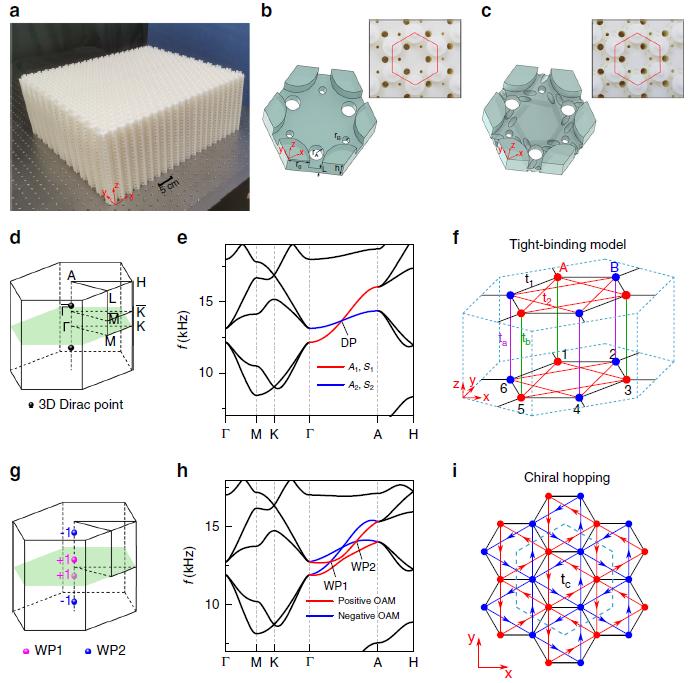
Credit: by Boyang Xie, Hui Liu, Hua Cheng, Zhengyou Liu, Jianguo Tian, and Shuqi Chen
Recently, the three-dimensional (3D) Dirac points and 3D Dirac semimetals have attracted tremendous attention in the field of topological physics. The 3D Dirac point is a fourfold band crossing in 3D momentum space, which can be view as the degeneracy of two opposite Weyl points. However, the 3D Dirac points can be described by the Z2 topological invariant other than the Chern number. The topological property of 3D Dirac point is not totally the same as Weyl point. Besides, the transition from Dirac points to Weyl points has not been experimentally studied in both photonic and acoustic systems so far. Therefore, the theoretical or experimental breakthrough of 3D Dirac points and the study on their transition is of great significance further research and application.
In a new paper published in Light Science & Application, a team of scientists, led by Professor Shuqi Chen from The Key Laboratory of Weak Light Nonlinear Photonics, School of Physics, Nankai University, China, and co-workers have achieved the theoretical and experimental realization of a pair of class I acoustic 3D Dirac points in a hexagonal sonic crystal and demonstrate how the exotic features of the surface states and interface states evolve in the transition towards Weyl points. The transition from two Dirac points to two pairs of Weyl points is realized by introducing chiral hopping into the Dirac sonic crystal. Correspondingly, the surface state dispersion evolves from connecting Dirac points to connecting Weyl points. Pseudospin-polarized helical states, which link the two Dirac points in momentum space, are created through particular interface design using sublattice pseudospin inversion.
The Dirac and Weyl sonic crystals were fabricated by 3D printing based on a layer-stacking strategy. Both the bulk and surface band structures are obtained, showing the topological feature in surface and interface states. The experiment results are consistent with the simulation results. These scientists summarize the principle results:
“We study the 3D Dirac sonic crystal for three purposes: (1) to realize a 3D Dirac point with band inversion in acoustics; (2) to realize the pseudospin-polarized interface states in acoustic semimetals; and (3) to experimentally study how the surface states act in the transition from Dirac points to Weyl points.”
“The helical states from 3D Dirac sonic crystal can be inherited by the Weyl sonic crystal, while more exotic interface states can arise with the chirality inversion.” they added.
“The presented pseudospin-polarized interface states and the chiral interface states correspond to different regions in momentum space and different frequencies, which may further inspire the design of topological devices using both kinds of interface states. We hope our work will inspire the design of weak topological insulators, the realization of acoustic hinge states, and the design of other 3D topological devices.” the scientists forecast.
###
Media Contact
Hua Cheng
[email protected]
Related Journal Article
http://dx.




